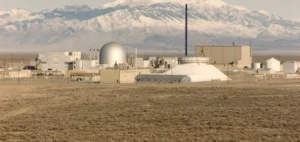Nuclear power receives record national support at IAEA’s 66th General Conference. An unprecedented plebiscite, including from countries that have not yet acquired nuclear energy in their energy mix. For the first time in history, the IAEA will have its own nuclear-themed pavilion at the upcoming COP27.
A plebiscite in favor of nuclear power
Nuclear energy receives a plebiscite by IAEA members in Vienna. The atom enjoys unprecedented support, with 140 national declarations in its favor. For Rafael Grossi, Director General of the IAEA, nuclear power offers an indispensable alternative to the various global challenges:
“The climate crisis and the energy crisis have prompted more countries to consider nuclear power as part of the solution, with opinion polls around the world showing a growing acceptance rate for nuclear power.”
A record number of countries officially recognize its key role in climate change mitigation and energy security. In their national declarations, the main operating countries mention nuclear energy favorably. Thus, its main advantages are that it is a reliable and low carbon energy.
The list of national declarations highlights the growing interest of developing countries in nuclear energy. China, which is currently building 18 reactors, reaffirms its commitment. China, the new nuclear powerhouse declares:
“China is committed to building a modern clean, low-carbon, safe and efficient energy system, and considers nuclear power an important option to achieve the goal of carbon cap and neutrality.”
The “newcomers” of nuclear power
In addition to the 32 countries that already use nuclear energy, some 30 other countries, known as “newcomers”, are moving in this direction. Thus, these countries are considering the development of nuclear energy to integrate it into their energy mix. In addition, the IAEA works closely with new entrants to help them set up the necessary infrastructure.
The Agency does this work through the Integrated Nuclear Infrastructure Review (INIR) mission. This helps countries to assess the state of their nuclear infrastructure. Thus, several countries have been hosting INIR missions in recent years to develop nuclear energy.
Bangladesh, hosted an INIR mission in 2016. The goal is also to help drive a national plan to become a developed economy by 2041. The country is moving forward with the construction of its first power plant, as confirmed in its statement:
“Bangladesh sees nuclear power as an important component of the future power generation mix.”
The COP27 as a horizon
The IAEA is also preparing to participate in the United Nations Climate Change Conference (COP27). While in 2021 the nuclear issue divided the international scene, the situation today is quite different. Thus, for the first time in its history, the IAEA will have its own pavilion.
This is an opportunity for the agency to highlight the role of nuclear energy in climate change mitigation and adaptation. This will allow member states and partners to hold events at the IAEA-led pavilion on a range of topics. In short, after having experienced a fall in popularity after the Fukushima incident, nuclear power is now making a comeback.
Countries could include the role of nuclear power in providing affordable low-carbon electricity. The atom helps build resilience into energy systems and ensures affordable supply. For example, Finland believes that nuclear energy and renewable energy sources are not mutually exclusive.






















